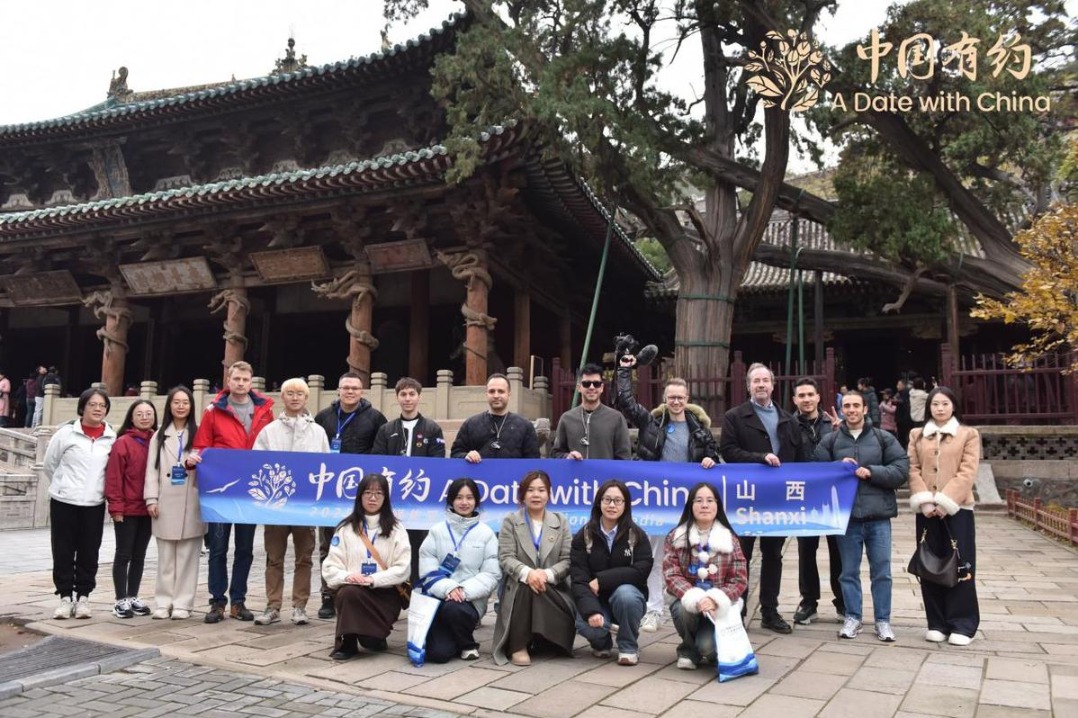Cooperative coexistence the only option for US

On Feb 21, 1972, then US president Richard Nixon became the first sitting US president to visit China, sending a tremor through the Cold War world and changing the course of history. The two countries, which had been "at war, near war" to quote Henry Kissinger, Nixon's national security adviser at the time, used pragmatism to thaw decades of Cold War animosity. The handshake between Nixon and then Chinese premier Zhou Enlai at the airport in Beijing wasn't just diplomacy; it was a disruption of the status quo — a recalibration of relations that redefined geopolitics.
The approach of both Chinese leaders and their American counterparts was a demonstration of extraordinary strategic acumen. By prioritizing long-term objectives over short-term political gains, they transformed a seemingly insurmountable geopolitical rift into a cornerstone of global stability. Since then, "the relationship between China and the United States has become a central element in the quest for world peace and global well-being", wrote Kissinger in his 2011 book, On China.
Nixon's engagement with China was rooted in pragmatism rather than altruism. By 1972, the United States needed to stabilize its presence in Asia, counterbalance the Soviet Union and extricate itself from the quagmire of the Vietnam War. The rapprochement with China achieved all three objectives, providing the US with a powerful partnership to influence the trajectory of the Cold War.
For China, the visit marked a break from prolonged seclusion and a platform for economic revival. Most importantly, for both sides and the rest of the world, the meeting between Nixon and Chairman Mao Zedong symbolized the recognition of shared stakes in global development and peace. The specter of catastrophic confrontation, which had been looming for years, was consigned to history. As Nixon observed, all nations stood to benefit from reduced tensions between the US and China.
Today, Sino-US relations stand at another crossroad. Disputes over trade and technology continue to escalate, driven by decoupling rhetoric that first gained traction during the previous Donald Trump administration. Adding to this is the US' military posturing in the Asia-Pacific region.
The way some US politicians view China's rise today was foreseen by Kissinger, who said that "whatever China's intentions", those adhering to the idea of a "predestined confrontation" would "treat a successful Chinese 'rise' as incompatible with America's position in the Pacific and, by extension, the world". He warned that any form of cooperation would be viewed as "giving China scope to build its capacities for an eventual crisis". His words have proved prophetic.
The heightened tensions between the two sides demand a reevaluation of the lessons from Nixon's 1972 visit. Competition between two large countries is inevitable, but it must not preclude dialogue and diplomacy. The US normalized relations with China in 1972 because the two nations realized that diplomacy can help advance their respective agendas.
Exchanges between two countries are not endorsements; they are instruments of diplomacy. The openness to dialogue exhibited by the leaders of the two countries, despite the profound ideological differences, should inspire present-day leaders to prioritize communication over confrontation.
The underlying principles of the Nixon-Kissinger diplomacy — pragmatism, patience and a focus on shared interests — remain relevant today. Yet some China hawks in Washington have championed the idea of containing China. But as Nixon and Kissinger understood in 1972, containment is a fantasy when dealing with a country as vast and dynamic as China. It didn't work during the Cold War; it won't work today.
The first Trump administration's attempts to decouple the US and Chinese economies showed the futility of such an approach. Kissinger, a passionate chess player, understood that the post-Cold War global economy is not a chessboard where pieces can be removed without consequences. With China deeply embedded in the global industry and supply chains today, any efforts to sever ties with China would harm the US economy as much as, if not more than, China's.
Furthermore, sidelining Beijing on global issues such as climate change, pandemics and nuclear nonproliferation only serves to weaken the US' international standing.
Economic exchanges, described by American diplomat Nicholas Platt, a member of Nixon's 1972 team to China, as the "nuts and bolts" of bilateral relations, eventually fostered the economic interdependence between the US and China we see today. While often criticized by Trump as undermining the US' position, this interdependence, which influences international relations today, serves as a stabilizing force, preventing competition from escalating into outright hostility. Any decoupling efforts risk eliminating this stabilizing factor.
Another enduring legacy of Nixon's 1972 visit is its emphasis on cultural understanding as a strategic asset. Kissinger's grasp of Chinese history and traditions informed his approach to negotiations. The cultural dimension of diplomacy, often overlooked, is important for fostering mutual respect and understanding.
In an era in which technological advancements have globalized communication, cultural exchanges remain an invaluable tool for bridging divides. People-to-people exchanges, academic collaboration, and cultural diplomacy help demystify societies and build a foundation of trust, reducing the likelihood of a new Cold War. This is particularly important because, as Kissinger warned, "a cold war between the two countries would arrest progress for a generation on both sides of the Pacific".
The most significant document to emerge from Nixon's visit is the Shanghai Communiqué, whose enduring relevance underscores the importance of framing dialogue on shared goals rather than irreconcilable differences. By enabling both sides to openly state their positions while emphasizing areas of agreement, the communiqué established an innovative model of engagement — one rooted in acknowledging reality rather than attempting to reshape it through wishful thinking.
"The appropriate label for the Sino-American relationship is less partnership than 'co-evolution'," wrote Kissinger in On China. "It means that both countries pursue their domestic imperatives, cooperating where possible, and adjust their relations to minimize conflict. Neither side endorses all the aims of the other or presumes a total identity of interests, but both sides seek to identify and develop complementary interests. The United States and China owe it to their people and to global well-being to make the attempt."
For Nixon and Kissinger, that co-evolution, or "cooperative coexistence" as Kissinger called it, necessitates engagement, which, for them, was not just an option but the only option. Their reasoning still holds true.
The author is a journalist with China Daily.
Today's Top News
- Japan's tourism battered as Chinese travelers cancel trips
- Japan blasted for troublemaking, military buildup
- China, Germany hold 4th high-level financial dialogue
- Carrier exercises bolster fleet response capabilities
- Fairness and justice in rule of law stressed
- Exchanges with Russia to expand






























